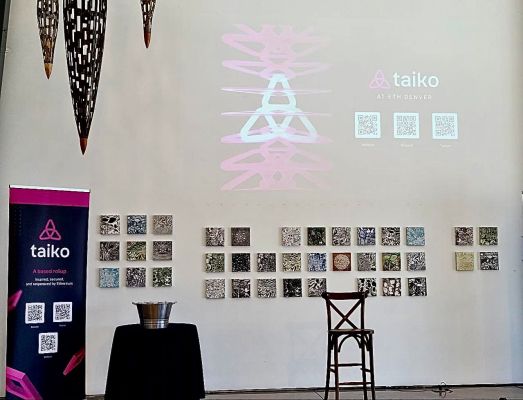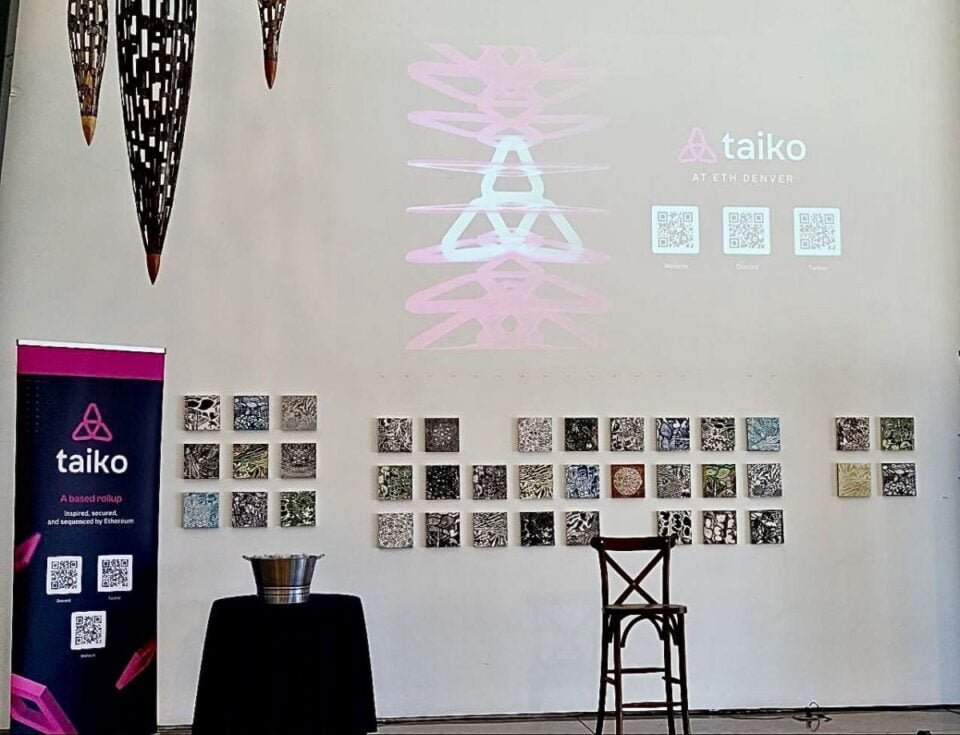Taiko raises $37M to build web3 infrastructure for a censorship-free internet

Amid the speculation and volatility in the casino-like crypto land, there remains a subset of individuals who espouse blockchain’s potential to decentralize various aspects of human activities for the greater good. Taiko‘s founder Daniel Wang is one of these idealistic founders.
A serial entrepreneur, Wang initially wanted to bring decentralization to social platforms. Decentralized networks like blockchains, he believes, help resist censorship through distributed data storage and community-based content moderation.
“I hope the next generation can grow up being free and able to say anything on the internet,” he told me in November at an Ethereum developer conference. “There won’t be progress if there is no freedom to criticize.”
Wang wanted to build the decentralized app on Ethereum. The blockchain co-created by Vitalik Buterin has attracted a flood of developers who use “smart contracts,” or lines of computer code that automatically execute predetermined terms, to enable crypto applications beyond simply storing value.
After some extensive research, however, Wang realized that none of Ethereum’s “layer 2” solutions, which are designed primarily to scale transactions on the network, were truly decentralized.
“It’s problematic to create decentralized apps on centralized blockchains,” he told me in a follow-up email interview.
Ethereum’s current capacity of processing around 15 transactions per second renders it impractical for many applications. As a result, “rollups” have emerged as a layer 2 solution by offloading Ethereum transactions to secondary chains and subsequently logging them back to the main chain in batches, reducing network congestion and transaction fees.
The issue with most rollups, according to Wang, is that they achieve scalability at the cost of decentralization, undermining the spirit of web3. Convinced that the infrastructure layer for truly decentralized social apps was lacking, he decided to fill the void, leading to Taiko’s inception in March 2022.
Over the last two years, rollups have emerged as a popular investment thesis in web3, and Taiko rode the wave. The two-year-old startup has so far raised $37 million across three funding rounds. Its Series A round, which has just closed with $15 million in funding, was led by Lightspeed Faction, Hashed, Generative Ventures and Token Bay Capital.
While declining to disclose its exact valuation, Taiko confirmed with TechCrunch that it’s reached the unicorn status.
Other investors that participated in the new round include Wintermute Ventures, Presto Labs, Flow Traders, Amber Group, OKX Ventures, GSR, WWVentures and more. It’s not uncommon to see a long list of investors joining one single round in the nascent crypto space, where the right relationships can make or break one’s success.
Certain investments in this round remain subject to regulatory approval, said a spokesperson for Taiko.
The company’s past investors include more established venture capital firms that were early to bet on Asia’s web3 scene, such as HongShan (previously Sequoia Capital China), BAI Capital and GGV Capital.
The funding will go toward preparing for Taiko’s mainnet launch. The company recently announced an allocation of $30 million in grants to developers, and its latest testnet, which went live last month, has amassed more than 1.1 million wallet addresses and over 13 million total transactions to date. (Wallet addresses provide a rough estimate of user activity on web3 services, though as in web2, one person can own multiple wallets and bot accounts remain a prevalent issue.)
“We strive to be like Ethereum where no one owns the network. We aim to be a public good,” said Wang, comparing Taiko’s corporate structure to that of Ethereum. Most crypto projects operate a nonprofit development arm to foster community building and decentralized governance, and a commercial entity for hiring people and raising venture capital money.
A truly decentralized social network
For Wang, Taiko provides a critical building block for a social network that is truly owned by users. Many existing social networks that purport to be decentralized often fail to deliver that promise, he argued.
“For instance, Lens and Farcaster run on infrastructure that can be further decentralized (compared with [ones] based rollup), and Damus runs on multiple centralized servers rather than a fully decentralized infrastructure,” he said.
The ideal decentralized social app, despite its greater technical challenges, could allow: “1. Ownership and control over your content; 2. Data privacy and security; 3. Censorship resistance … and thus, freedom of speech.”
One of the greatest challenges facing decentralized social apps is content quality and safety. While web2 social networks select content to attract users, the decentralized counterparts might end up with low-quality or even offensive content without the presence of a curator.
There should be an intermediary layer, or a “relayer,” that sits between decentralized content and users, suggested Wang. Each relayer can then filter content that reflects the “unique perspectives” of the underlying decentralized social network, thereby attracting diverse user bases. “We are still waiting to see this approach effectively implemented,” he said.
But how does the app incentivize users to create desirable content? This poses another challenge.
“For a web2 social network, the objective often lies in amassing a large user base to generate ad revenue, which could potentially lead to the company going public,” Wang suggested. “However, in the web3 domain, if the team holds no ownership, it becomes crucial to embed token incentives within the system. This necessity can sometimes divert attention from developing a genuinely useful product towards prioritizing profit generation.”
“We are 10 years from crypto’s mass adoption, but every technology is built on an existing technological achievement,” he added.



